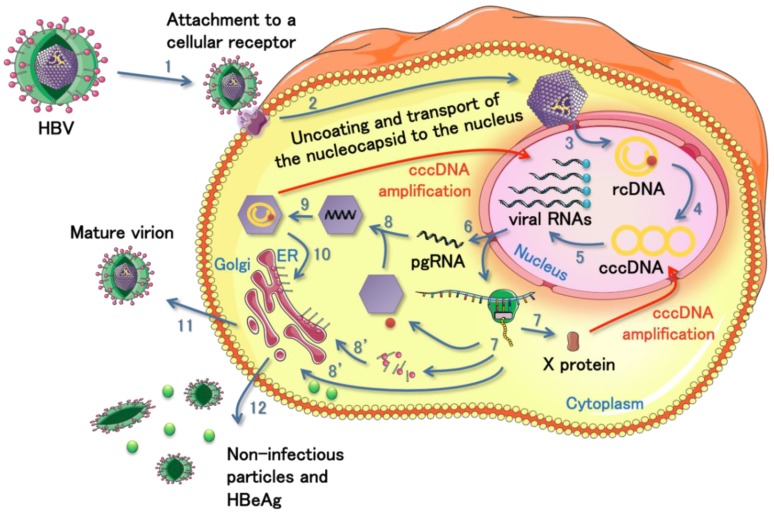Figure 2.
Schematic representation of HBV life cycle. The virus infects a cell by an initial attachment to a cellular receptor that allows its internalization (step 1). In the cytoplasm, the virus is uncoated and the nucleocapsid is transported to the nuclear membrane (step 2). The viral genome is released into the nucleus under its relaxed circular form (rcDNA) and converted into a covalently closed circular DNA (cccDNA) from which all the viral RNAs are produced (steps 3 to 5). The viral RNAs transfer to the cytoplasm for traduction of the different viral proteins (steps 6 and 7) or for subsequent reverse transcription of the pregenomic RNA (pgRNA, steps 6, 8 and 9). All the viral components move to the proper place and assemble together to form new mature virions (steps 8, 10 and 11). The virus also produces non-infectious particles and extracellular antigen (HBeAg) as a decoy for the immune system of the host (step 12). The nucleocapsid containing the rcDNA and the HBV X protein (HBx) can go back to the nucleus in order to amplify the cccDNA and maintain the viral production.

